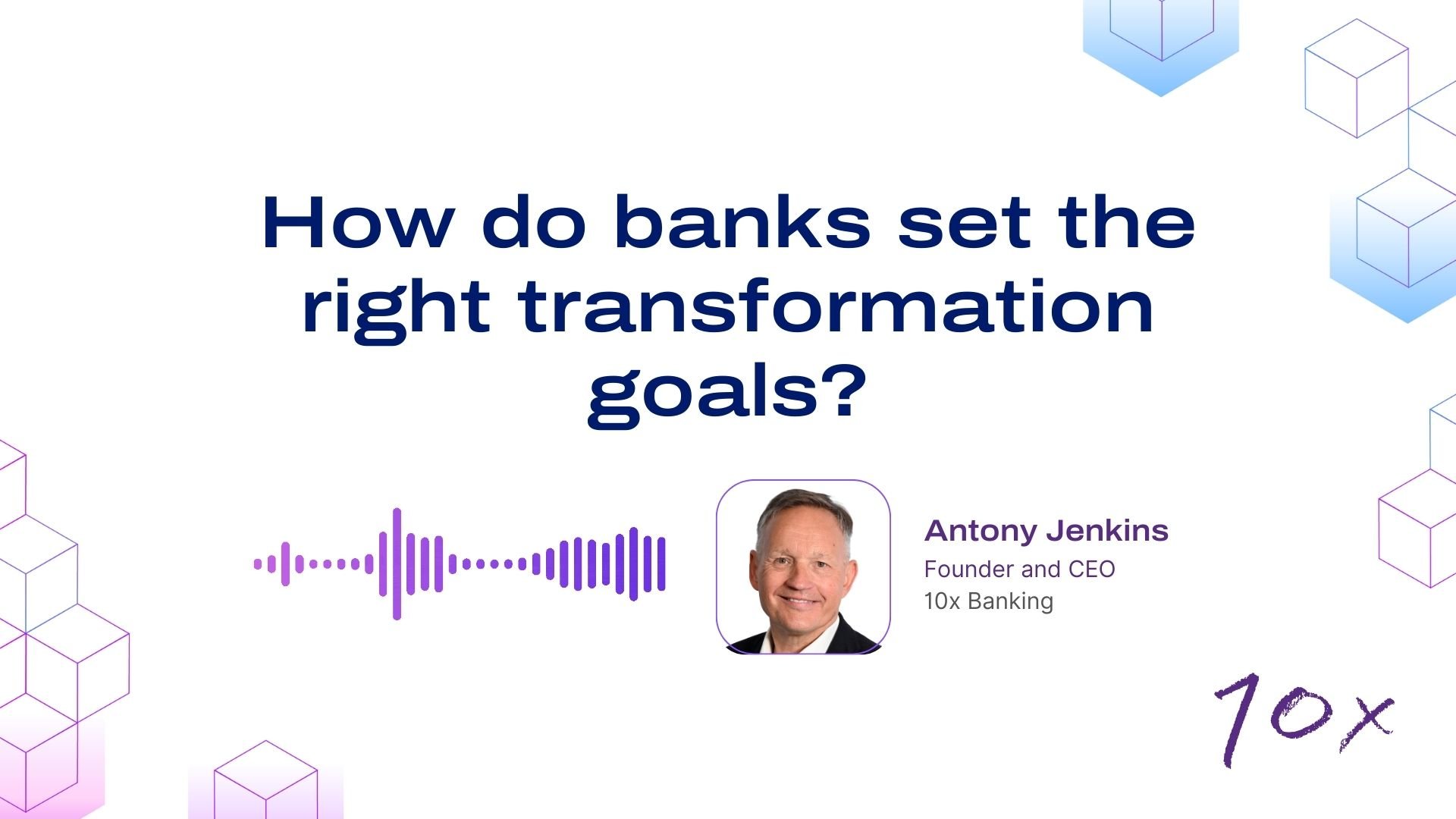The digital economy means customers across all industries expect better digital experiences, according to a recent survey – and banking is no exception.
In finance, "there has been a proliferation of places where customers can go to have their financial needs met," says Antony Jenkins, Founder and CEO of 10x. "We've seen the encroachment of big tech into financial services. I think we're seeing some fairly profound shifts in customer behavior."
The range of options available to customers puts more pressure on traditional banks, who have been dealing with increased competition for some time. Where banks once might have believed that a combination of scale, regulation, and customer inertia would protect them, it’s becoming clear, as Antony says, that customers are changing. Digital transformation offers banks a way to keep up.
The digital shift
The convenience of modern, digitally enabled products and services has been a significant driver of customer expectations. Streaming video services give us instant access to thousands of films and TV shows, for example, and online retailers offer next-day or same-day delivery on all kinds of products. It's little wonder that consumers expect similar convenience in financial services.
According to Visa, digital payments increased by more than 30 percent between 2020 and 2021, and that growth continues. Meanwhile, two-fifths of Americans say that none of their purchases in a typical week use cash. This plays into the hands of those offering digital payment services in particular. But that's not the only way that specialized fintechs and digitally-native banks are placed to meet customer expectations.
In this interview clip, Antony gives his perspective on how the financial services landscape is changing, and how it's easy to underestimate the long-term impact of change. For more insights like this, follow us on LinkedIn.
How Neobanks have rewritten onboarding to take a few minutes is a good example of change. KYC, AML, and other checks can be handled with a few taps, supporting documents uploaded via a quick photo, and a voice recording used for identity purposes.
Speaking at a recent webinar on changing customer expectations in banking, Aman Virk, Senior Director of Customer Transformation at Salesforce, explained that she recently set up a savings account with a new bank in just five minutes, but spent far longer dealing with her existing bank to transfer funds across to it.
"To transfer some savings from my existing bank, I got caught up in a fraud check. I had to ring them rather than go online. I went through a 45-minute conversation to transfer my money into my new savings account. And it was clear the agent was following the script, didn't really understand my background, or what I was trying to do. I had to answer every single question. I couldn't go off the script. It was very challenging."
Removing the friction
This kind of friction is something consumers are increasingly unwilling to accept. They also expect more transparency from banks, whether that's about when or why interest rates are changing or when money enters or leaves their account.
Another area where Aman believes digital banks succeed is in innovation, through identifying gaps in the market and plugging them effectively: "They've [offered] budgeting tools, instant money transfers, cryptocurrency. We've seen neobanks step into the under-served or unserved population. Tools that support vulnerable customers, like the gambling block, were also led by new banks."
Of course, all banks are innovating, and many neobanks are still perfecting their product-market fit. But overall, banks must play catch-up with digital-native players because they can't start from scratch. The challenge is much bigger, with legacy technology a significant blocker for banks to overcome.
When it comes to phasing out legacy tech, banks must take stock of their starting point. Banks tend to focus on where they are trying to get to, but overlook some of the constraints that hold them back from getting there. Factoring this in is a must.
Unlocking data
Many banks try to catch up by adding individual solutions in specific areas. These changes provide incremental changes in the short term but don't address the underlying issue of technical complexity and siloed data. Banks must address this with a transformation program that starts with the core, delivered in phases, or they will struggle to release products, functionality, and updates fast enough.
Data is critical, says Josh Daniels, Product Director at 10x. "Traditional banks have had a problem with data that's fragmented, in multiple data stores, or even in different core banking systems that don't talk to each other."
Properly connected, he says, data can drive AI applications, 'next action' systems for customer service agents, and provide the kind of financial information that makes it easier for customers to manage their money.
The 10x Salesforce module is a good example of the power of data. It gives customer service agents a single view of the customer without logging in to multiple systems or passing between people. For the customer, it powers click-to-call in the banking app and asynchronous live chat, so they can get through to the right person and bypass much of the verification process because they already authenticated.
This is just one way in which the 10x platform enables banks to meet customers’ needs. In turn, this 360-degree, real-time view of the customer unlocks entirely new ways for banks to compete.
To keep up with the latest insights from 10x, follow us on LinkedIn.



